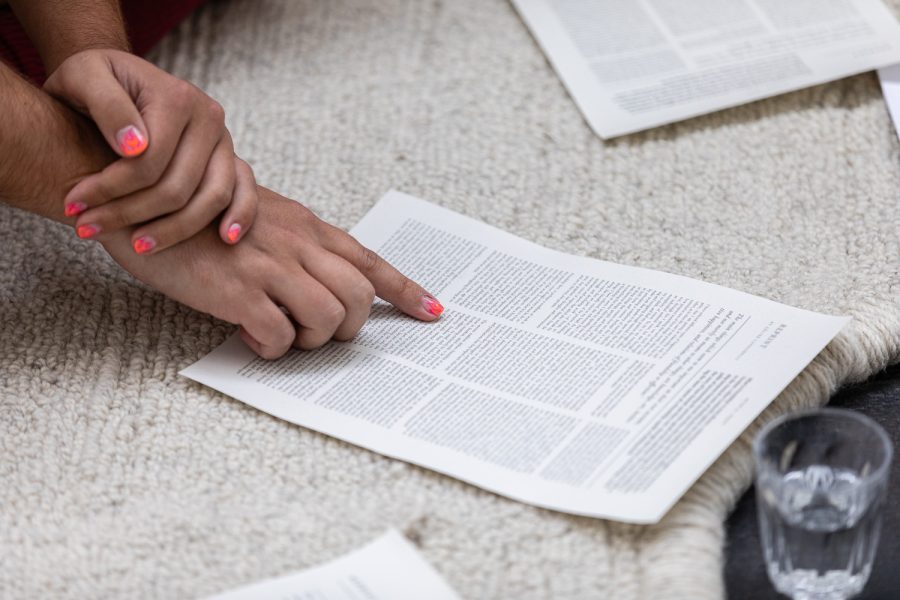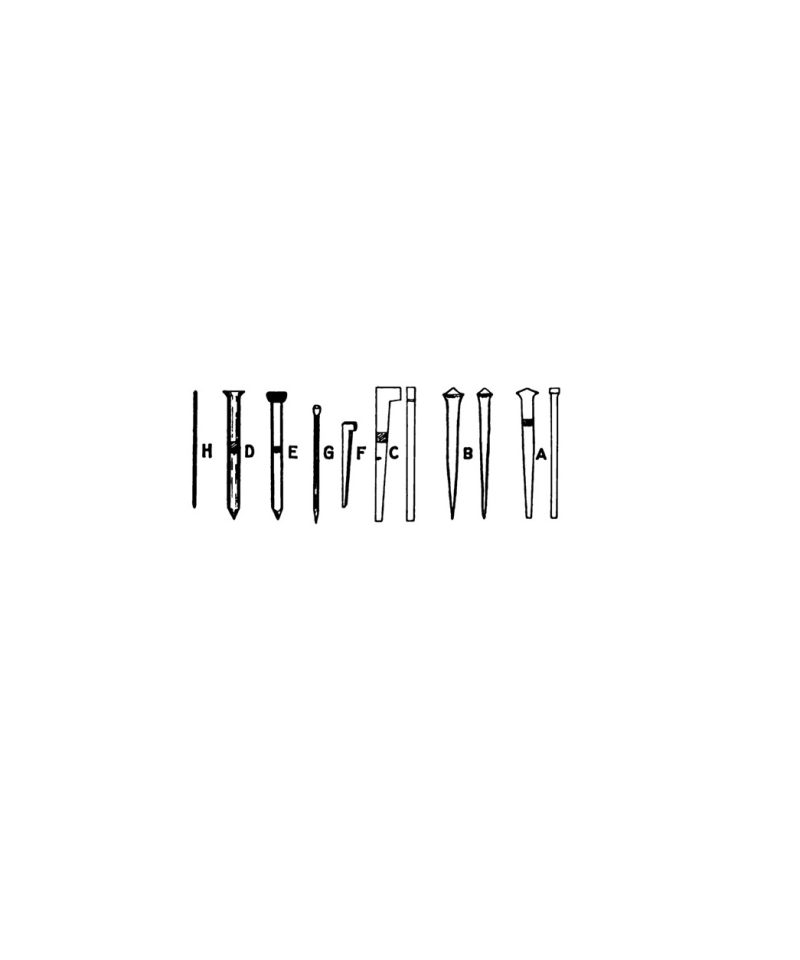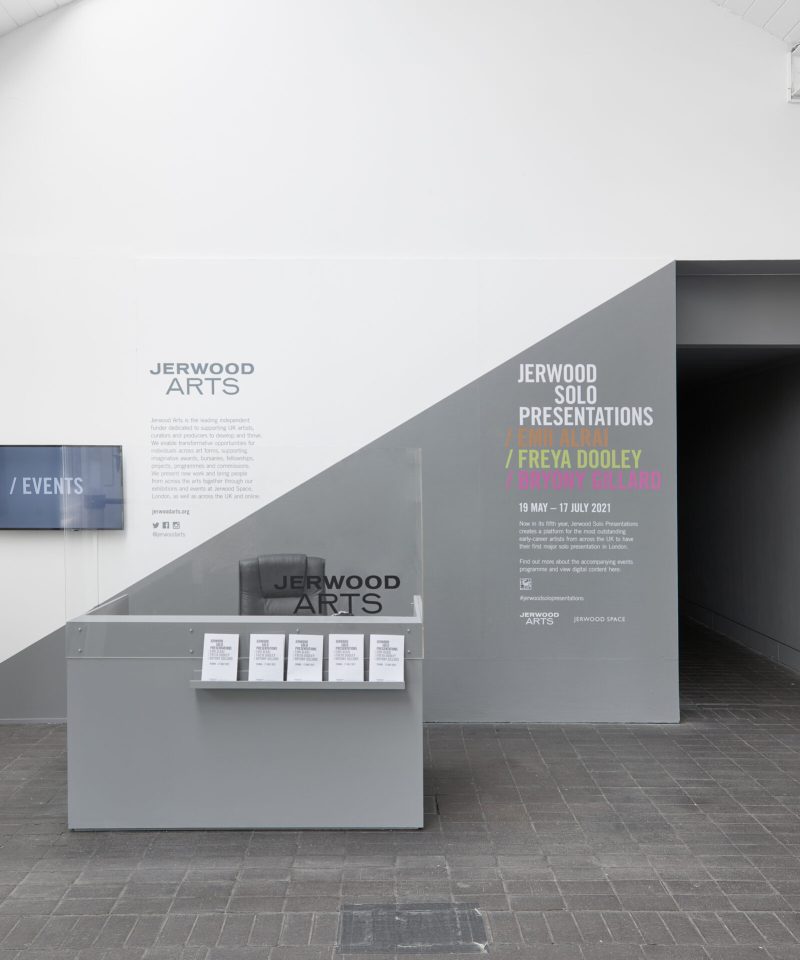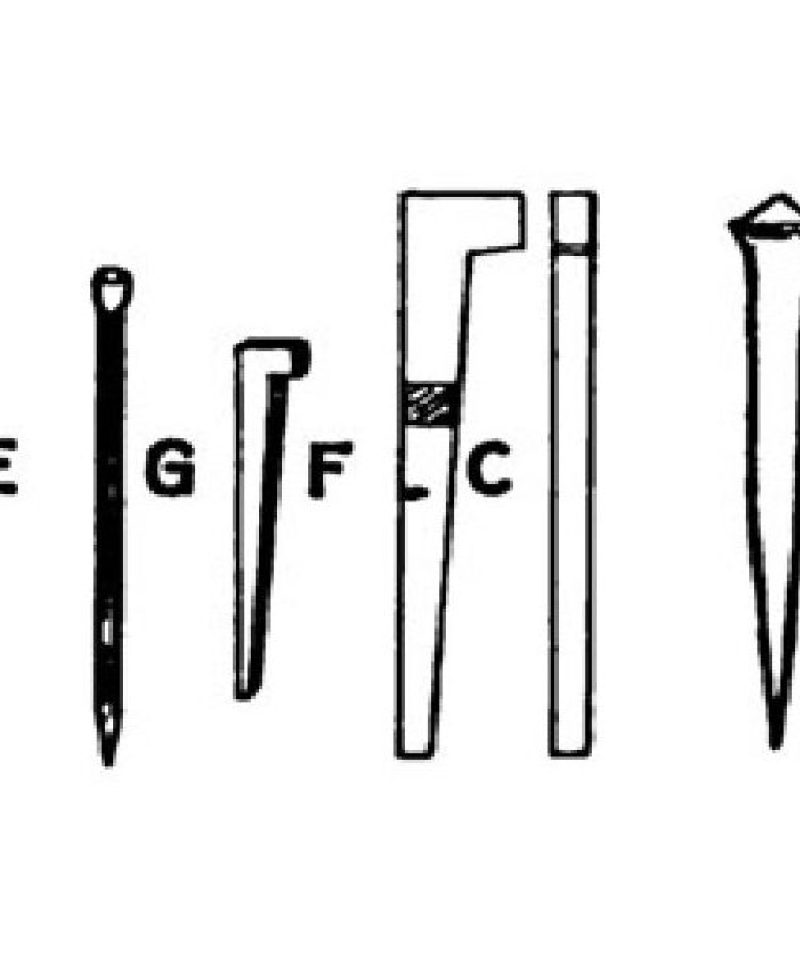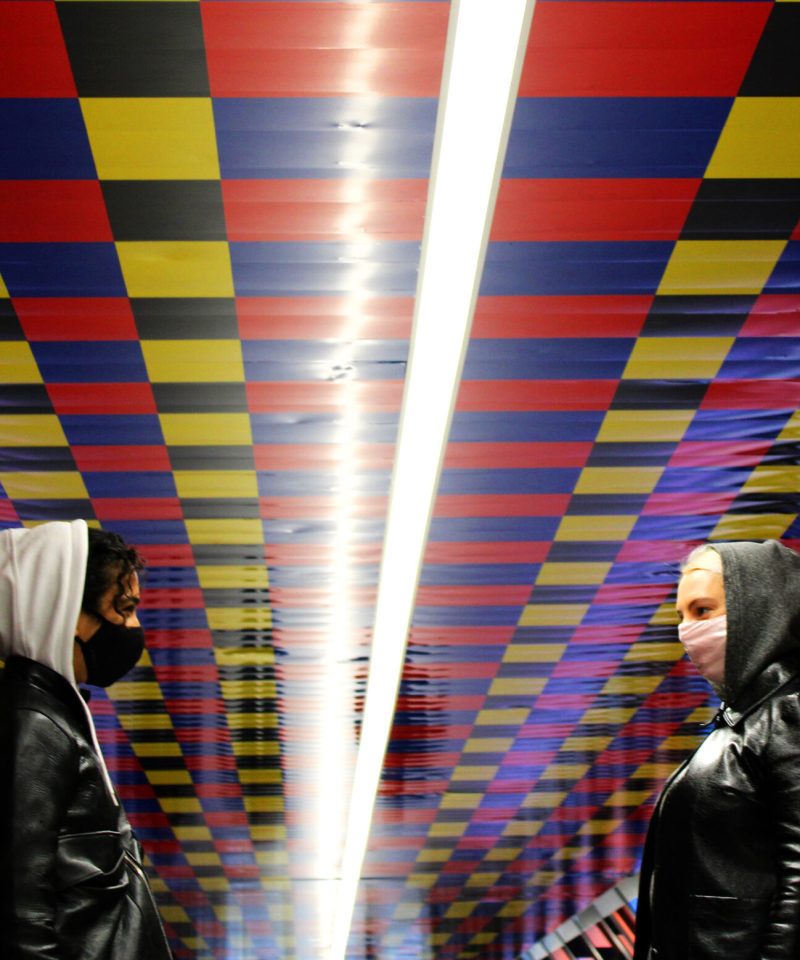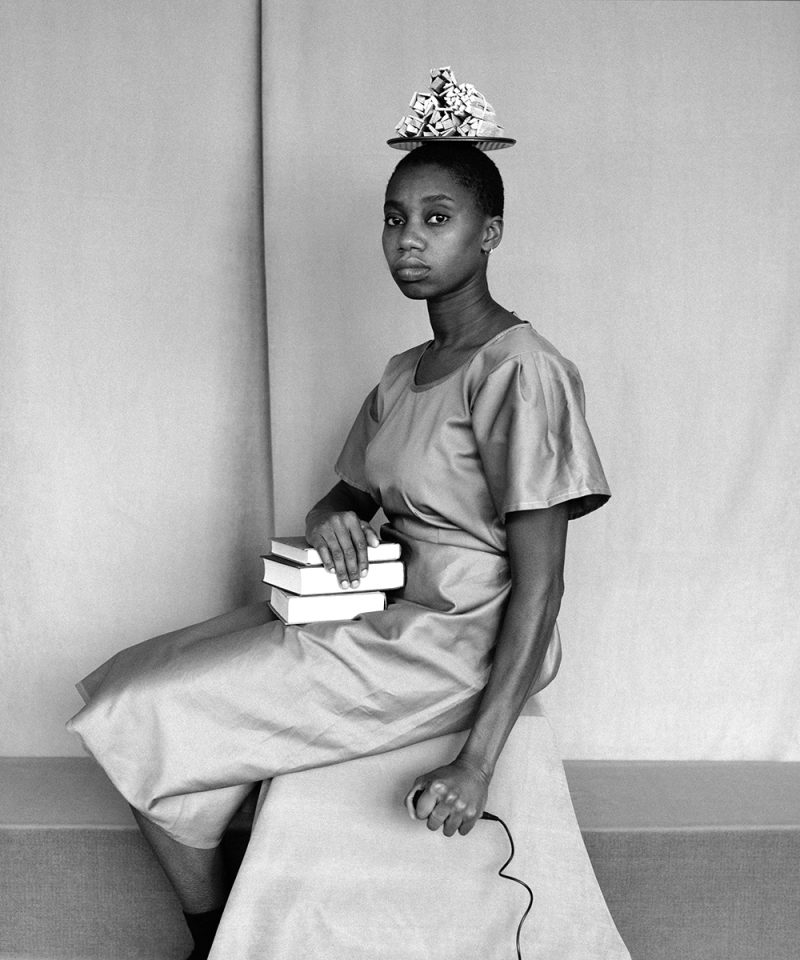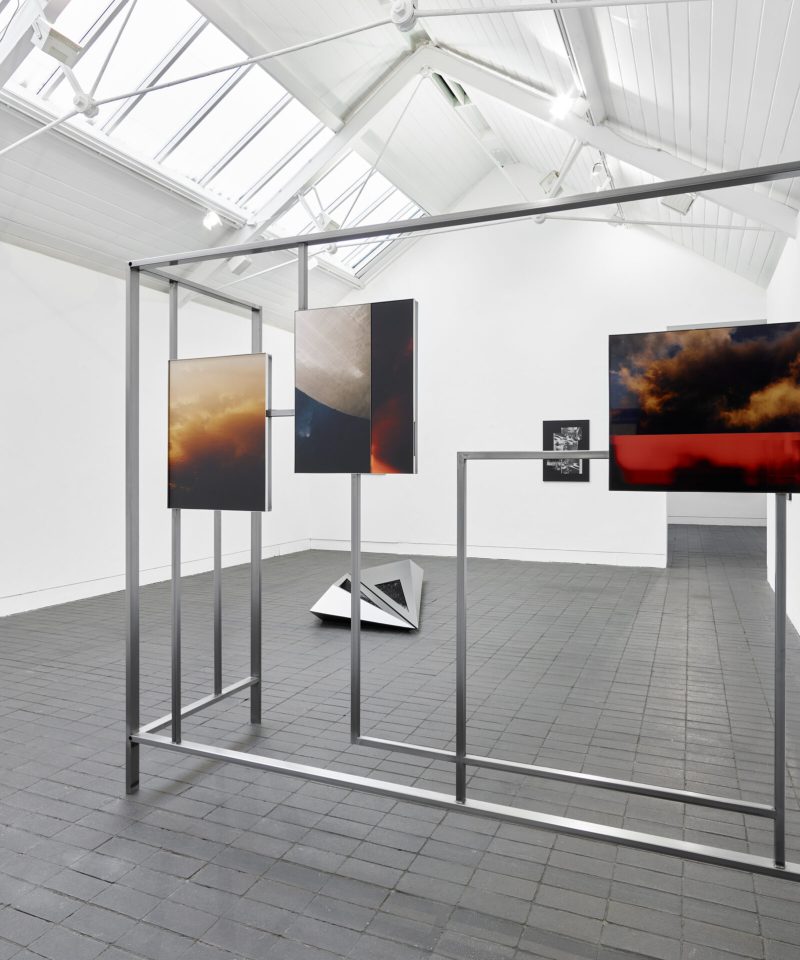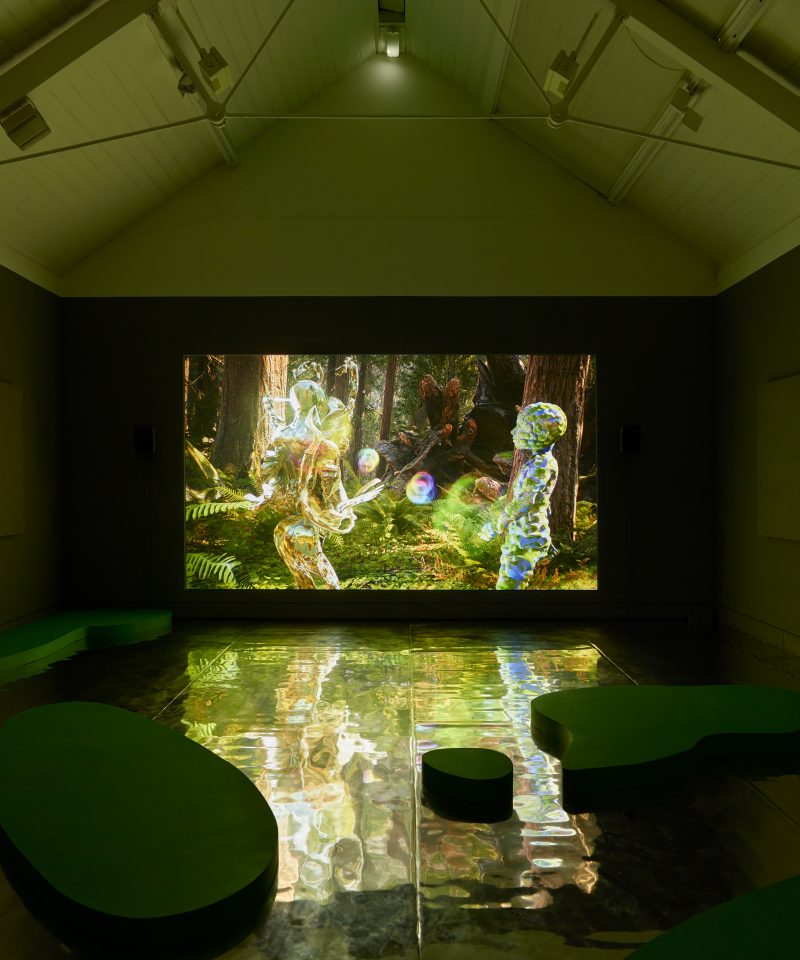A downloadable PDF version of this text is available at the bottom of the webpage
Steel toe caps are cold as fuck. When the frost hits, halfway through the day you’ve lost all feeling in your toes and you don’t get it back til you’re home. The workshop is barely heated and its floor is made of concrete. Between steel and concrete, blood trickles. I have an old injury on my left hand: a pit on the inside edge of my thumb where the fatty layer hasn’t regrown. The inside of my left index is gnarled, senseless, missing ten millimetres of the main nerve. It was taken out by the circular blade on a table saw which also bit a half-moon-shaped chunk out of the end of my thumb. The blood wasn’t washed off the blade when I went back on the saw, three months later, heart pounding and sweating from fear. These injuries sometimes ache in the cold.
It’s freezing this morning so we put the kettle on straight away. We briefly discuss plans then start work. I am building a pair of hardwood doors with a top curved windowpane, traditionally called a semi-headed frame. The curved section has to be built up in layers, using a jig to cut out identical pieces of timber then gluing these together using dozens of clamps. It is precise and painstaking work, a dense technology of the body. At the same time I am thinking about an art review I need to write and how strange the language of art sounds inside a joinery shop. Last week I attended a press preview in the city, beating as much sawdust from my clothes as I could then driving forty-five minutes to meet people in time for lunch. As we sat around the gallery I felt slightly disoriented and tried to imagine what it might feel like to be there as someone with my job but less experience of art galleries and art talk. The queasiness of the situation struck me as significant since the show I’d be reviewing was invested in deconstructing systems of power. I thought about class relations and the problem of translation across bodies. How was it that contemporary art’s atmosphere still felt so jarring, even where its dominant ethos was one of social egalitarianism?
At 10am we stop for coffee. I pick up my phone to scroll through art and film reviews. Nowadays it is virtually impossible to find criticism that is not written by or about rich people. In fact, I’m starting to think all modern culture is about rich people and food. Here’s how Rachel Cusk begins her Outline trilogy (2014–2018): “Before the flight I was invited for lunch at a London club with a billionaire I’d been promised had liberal credentials”. And here’s how Ben Lerner begins his 2014 novel 10:04:
“The city had converted an elevated length of abandoned railway spur into an aerial greenway and the agent and I were walking south along it in the unreasonable warmth after an outrageously expensive celebratory meal in Chelsea that included baby octopuses the chef had literally massaged to death.”
Crudo (2018) by Olivia Laing is a loose collection of menus, meticulously itemised, guiding the reader through a formal evocation of A-class ennui. Almost every recent television series is about rich people, from The Crown to Industry, DEVS and Succession. In the heat of Fleabag’s success, The Observer featured a special response section to Phoebe Waller-Bridge, listing four of the featured respondents on its front page. None of these – Waller-Bridge included – went to state school.
In 2020 Arts Council England started monitoring the socio-economic background of employees in arts organisations, where percentages of working-class people remain disproportionately low. According to Panic!, an AHRC-funded report published five years earlier, working-class people (defined as people who grew up in “a household where the main income earner worked in a semi-routine or manual job, or was long-term unemployed”) make up 12.6% of the workforce in publishing, 12.4% in film, TV and radio, and 18.2% in music, performing and visual arts. These percentages are significantly lower than the national average. In the report’s words, ‘no creative occupation comes close to having a third of its workforce from working-class origins, which is the average for the population as a whole’. Moreover, widening access to higher education – an ongoing process – does not address students’ unequal access to funds and professional networks following graduation, so that childhood inequalities continue to manifest long into adulthood. Working-class people are, on average, half as likely to gain a position within the arts following graduation. This imbalance hinges on several factors, including family support for developing an artistic practice without needing to work, being able to take on unpaid internships, and using family connections to access insider positions and knowledge. The result is an unrepresentative ‘creative class’ whose values are statistically the most progressive and left-wing of any occupational sector in the UK, yet whose demography remains fundamentally determined by conservative principles.
It would be easy to say that this imbalance stems from a problem of accessibility and that better curatorial and editorial practices will yield a more just playing field. Such measures will surely help, although cherry-picking the most promising elements from a disadvantaged sector of society will do little to dismantle the structural conditions that make access difficult in the first place. Economic, social and linguistic barriers are difficult to shift, especially within arenas that place a high premium on conceptual elegance and verbal poise. Elite language poses a particular challenge for levelling up cultural criticism that is not necessarily applicable to social strata outside of the working class, though it may obviously overlap with and be reinforced by other identities. I want to talk a little about why that might be, drawing on my experiences as a joiner and novice art critic from a single-parent, economically precarious background. What follows can be read as a kind of auto-ethnography. It is neither intended to convey anything like a universalism, nor to suggest that my lived experience precedes the economic and ideological structures that shaped me. We are born inside material conditions. How we read those conditions is itself a product of conditions.
One final point: although I occasionally use theoretical-sounding language to raise doubts about the merits of theoretical language in art, I take the essay’s hypocrisy as an indication of the depth of the problem and a reflection of the intended audience of this essay (not working class) rather than proof of the impossibility of working outside theory. Inescapable theory would be a nightmare. As Marshall Berman once wrote on Foucault:
“there is no freedom in Foucault’s world, because his language forms a seamless web, a cage far more airtight than anything Weber ever dreamed of, into which no life can break. The mystery is why so many of today’s intellectuals seem to want to choke in there with him.” [1]
*
I am half-Japanese, half-English with a Polish first name. I was born in a city that is famous for disappearing: it took just a few seconds for Little Boy to turn Hiroshima to ashes. But the city rebuilt quickly after the bomb, helped along by Japan’s rich heritage in carpentry. This heritage is part of what drew me to joinery after leaving school in 2003 when I began a five-year apprenticeship in the north of England. During this time, and like many people of my age, I went through an intense phase of adaptation, learning that things I had taken for granted were embedded in economic and social structures shaped by power. In my case, I stopped seeing buildings, doors and windows and began seeing a material coagulation of effort or what Marx called “crystallized labour”. What had been home or a pub became an archive of physical work, recording the labour and technical ability of generations of tradespeople. I’d never read Marx but the connection between labour time and commodity value was obvious. There is a moment during any making process when an object becomes almost-itself, when it stops being a simple assemblage of components and becomes a functional object with a name. Generally, people only see this final layer of the object but for the maker it is difficult to separate the manufacture of an object from its final state, since the memory of production – literally embodied as visual plans, muscle memory and working habits – does not just disappear. I imagine many tradespeople experience physical space in a similar way, that is to say, less as a canvas on which to paint their lives than an accumulation of work that is already done, in progress or yet to be done.
When I entered university as a mature student in 2010, I suddenly gained a new vocabulary and set of concepts to articulate the experiences of the previous seven years. It was exciting to discover a voice and join in cultural conversations, opportunities that expanded fast during five bewildering postgraduate years at Oxford and a brief tenure as editor-in-chief of a literary magazine. At the same time, I began to lose connection with the materiality – that is to say, the production history – of things. The world became more two-dimensional, abstract and fluid, even in the midst of a physical encyclopedia drenched in blood. (Oxford displays a singular blindness to the colonial violence surrounding its assets.) Conversely, when I returned to joinery in 2019, I regained my former frame of experience while also feeling the muting effect of manual labour, as long periods of silent work and three-dimensional conceptualisation replaced the constant verbal practice that stitches together university life. We know that neural connections in the brain are strengthened by repetition and that fixed pathways can only be established through constant stimulation. This is particularly true during childhood when the brain is more malleable but the principle applies throughout our lives. Until our dying days, we must ‘use it or lose it’.
Manual occupations generate a deeper understanding of the material world than most desk-based occupations. They are often exceedingly technical and intellectually challenging. Yet they do not require the strong affinity for theoretical ramification and linguistic refraction that is the hallmark of contemporary art criticism. How, then, can working-class people be expected to participate in discussions alongside people for whom theory is not only a second language but a quasi-self-sufficient domain of conceptual creativity?
In Steal as Much as You Can (2019), Nathalie Olah lays bare the gradual – and now almost total – erasure of the working class from mainstream UK culture from the 2000s to the 2010s. Whereas the 1990s still gave scope for artists like the YBAs and even David Hockney to break through or consolidate their positions, the 2000s saw these opportunities close down and the cultural mainstream fill up with middle- and upper-class elites who were often privately educated or extended a comfortable heritage of boho creativity. Olah links this development partly to Tony Blair’s anti-welfare policies, which made artistic survival outside of private avenues virtually impossible, and partly to Blair’s emphasis on higher education, which tended to devalue manual work and apprenticeships, funneling lower-class young people into the university system and ultimately generating a large contingent of disenfranchised, mostly unemployed and unsupported graduates (of whom Olah was a part).
According to Olah, this latter development was a double-edged sword. While it clearly marked a step away from working-class sources of meaning and value, it also birthed a new generation of critically-minded young people whose exposure to Michel Foucault, Karl Marx, Malcolm X, Stuart Hall and Toni Morrison at university now forms the basis for a significant counter-revolution. But two things need pointing out here: first, Olah’s generation graduated in 2008–2009, more than a decade ago. Surely this is long enough for significant inroads to already be taking effect. Why haven’t they? Second – and this may partly explain the first point – the consolidation of a critical literati, no matter how left-wing or progressive, will clearly sustain inequality if its own class tendencies remain unchecked. At Oxford, wealthy students often occupied the centre of progressive discussions, simply because they had been introduced to Marx, Foucault or Sara Ahmed at the youngest age, i.e. because their parents were academics, writers or politicians. Even where communities open up spaces for radical critique, these tend to fill up with the same class Olah excoriates for dominating the cultural mainstream. (The white colonisation of decolonisation in the academy follows a comparable pattern.)
Such atavisms are unsurprising since languages are made by communities. If the dominant demography of the creative industries is, in the first instance, a privileged super-class, its cultural habits will continue to determine the essential conditions (rules of speech, ideation, taste, etc.) for entry into that discourse long after measures to increase accessibility have been introduced. The switching of priorities within discourse, e.g. from pure aesthetics to politics, will not necessarily have any bearing on its accessibility and adoption by the working class if its grammar and, indeed, its predominance within fields that are not traditionally reliant on language, do not change in themselves. Consider this extract from Lauren Berlant’s Cruel Optimism (2011), now canonical in art criticism circles:
“To understand cruel optimism as an aesthetic of attachment requires embarking on an analysis of the modes of rhetorical indirection that manage the strange activity of projection into an enabling object that is also disabling.”
It is difficult to see how this passage might speak to people who have not gone to university and mastered the peculiar vocabulary and rhythm of theoretical prose. Yet this type of language provides the discursive underpinning for swathes of contemporary art and is intrinsically bound up with the experience and critique of modern culture. Tate’s online art glossary ‘ART TERMS’ – a free resource that is ostensibly about facilitating access – often references theory directly, as, for example, in its entry for ‘Electronic media’:
“Much of the theory surrounding the use of electronic media by artists is based on Walter Benjamin’s seminal essay of 1936, The Work of Art in the Age of Mechanical Reproduction. The essay discussed the democratisation of art, freed from its confines as a unique entity thanks to the development of photographic reproduction and forms such as cinema, where there is no unique original.”
The Work of Art is a staple of first-year undergraduate arts courses but virtually unknown outside of university-educated circles. It is a relatively readable essay that nevertheless requires a thorough grounding in Marxist theory and aesthetics to be fully understood. If “much of the theory surrounding the use of electronic media by artists” is based on this essay, how can people who have not gone to university understand and appreciate what electronic media is?
It is true that linguistic and theoretical sophistication is part of what enables art to address and critique systems of power on their own level, at their own degree of Machiavellian complexity. Yet it is also true that such sophistication may sequester art from the disadvantaged people it often aims to represent and thereby perpetuate a system it believes – and must continue to believe – to be deconstructing. Berlant analyzed the desire for something that appears beneficial but is actually an obstacle to our own flourishing, for example, “unachievable fantasies of the good life”. But what about a desire for social equality which threatens the articulated desire itself, and therefore must be kept unrealised? Can’t social egalitarianism, like conventional “cruel attachments”, provide “something of the continuity of the subject’s sense of what it means to keep on living on and to look forward to being in the world”?
Inasmuch as art criticism is concerned with social justice, its gatekeepers must do more to grasp the magnitude of the challenge faced by working-class people who seek to join conversations within the upper reaches of the art world, as creators, speakers and interlocutors, even – perhaps especially – where art crosses with ethics and sells itself as egalitarian. Despite decades of initiatives and institutional efforts to widen access for economically disadvantaged people, contemporary art remains rarefied to a degree that is difficult to imagine for anyone not initiated into its ranks. This is not simply a problem of accessibility. It is intrinsic to the mode in which art is currently made, talked about, experienced and consumed. Even in its progressive variants, the language of art is so technical and allusive that it is literally incomprehensible and in many cases uninteresting to anyone who lacks a basic training in art theory. Ironically, twenty-first-century art, while riding on a promise to deconstruct class refinement, has reaffirmed its elite status by mining into concepts, vocabularies and techniques that are not only difficult to decode by the working class but increasingly detached from the reality they seek to represent, and to that extent complicit in a second-order mystification of the ideological structure that these concepts, vocabularies and techniques set out to undermine.
*
A window is a functioning object that must be made to a very high degree of accuracy. It is also a store of information – about the property it is fitted into, its cultural and historical context, the manufacturing materials available at the time, and about the ability and eye of the maker. The range of skills required to survey a building then manufacture a simple wooden window from start to finish is enormous, too enormous and tedious to put into words. The only way to master these skills is to absorb them into one’s body, layer by layer until the older knowledge and techniques become second nature and one can move onto the next. The process takes years. In my case, it took five, although it was not uncommon for older firms in the UK to insist on seven. In Japan, it is said that a minimum of fourteen years training is required before making a single cut on a temple structure.
This type of knowledge, whether inscribed in the body or the mind, is essentially invisible to cultural discourse. And it will remain so, because it is not a matter of language. The point is not the romantic one that authentic being or art are beyond language but that such ways of life condition us, inexorably, to stand outside of systems in which language is the predominant medium and commodity of exchange. Consider again the Panic! report’s definition of ‘working class’ households: those where the main income earner works or worked in “a semi-routine or manual job”. So long as art remains wedded to theoretical language, people whose primary occupation is concentrated in the body or repetitive administrative tasks will be forced onto the sidelines, leaving the intellectual classes to thrive in a self-perpetuating loop between critic and creator. This loop both shapes and is shaped by criticism: by unravelling what the creator has tied into the work, the critic completes art’s cycle from higher education (critical input), to working creativity (raw output) and reception (articulation), sending digested material back into higher education and ensuring the artist’s continued access to funding. It goes without saying that this relationship is part of the problem critique seeks to address. Yet the impossibility of following through on critique’s promise may lead to a projection of values onto passive subjects, who themselves become factors in the reproduction of structural inequality. Witness the rampant fetishisation of the working class, the refugee, the sexually deviant.
In asserting that there are forms of class struggle that are inherently antithetical to theoretical language, it is important not to lose sight of the value of theory as a political fact, and of the risks inherent in what bell hooks calls the “dangerous anti-intellectualism” behind many reactions to theory, including those that would silence minority – especially black women’s – voices. In ‘Theory as a Liberatory Practice’ (1991), hooks challenges the notion that action or practice should take precedence over talk grounded in theory, on the basis that such notions rely upon a distinction between theory and practice that is untenable and may in fact shore up existing inequalities. For hooks, theory and practice naturally go hand-in-hand, since doing theory is itself a form of practice. Attacks on theory perpetuate a false dichotomy that ultimately stifles resistance by discouraging dialogue among the people who stand to gain from it most and casting emancipatory education as a classist and patriarchal act.
These are powerful arguments and it is not the intention of this essay to challenge them. I do not wish to discourage theorising in general, only to examine the art world and its unique relationship to theoretical language. Yet even hooks is uncomfortable with ways in which theory may be co-opted, distorted and commodified in academic settings. In some circumstances, theory may perversely reinforce the very structures it sets out to deconstruct, e.g. through the professionalisation and academisation of critical thinking – a development which, in hooks’s experience, has tended to favour higher-class white men and women. This ambivalence towards a certain type of theory is most apparent in the first part of the essay, where hooks wonders whether there is any value in feminist theory that “has no meaning, cannot be understood, or when understood in no way connects to ‘lived’ realities beyond the classroom”:
“As feminist activists we might ask ourselves of what use is feminist theory that assaults the fragile psyches of women struggling to throw off patriarchy’s oppressive yoke. We might ask ourselves, of what use is feminist theory that literally beats them down, leaves them stumbling bleary-eyed from classroom settings feeling humiliated, feeling as though they could easily be standing in a living room or bedroom somewhere naked with someone who has seduced them or is going to, who also subjects them to a process of interaction that humiliates, that strips them of their sense of value. Clearly, a feminist theory that can do this may function to legitimize women’s studies and feminist scholarship in the eyes of the ruling patriarchy, but it undermines and subverts feminist movements. Perhaps, it is the existence of this most highly visible feminist theory that compels us to talk about the gap between theory and practice. For it is indeed the purpose of such theory to divide, separate, exclude, keep at a distance.”
In order to work through this ambivalence, hooks roughly distinguishes two modes of theorising: theorising that exceeds its function as an extension of political agency and is therefore ‘instrumental’, jargon-ridden and detached from real life (let us call this ‘Theory 1’). And theory that is rooted in the material conditions of existence or what hooks terms ‘lived experience’ (‘Theory 2’). On the second understanding, theory is literally child’s play: it is what hooks did as a child, in order to make sense of her surroundings and the hardships her family endured. Hooks explicitly equates theory with “[compelling] folks around me to do things differently, to look at the world differently”. There is no question that ‘theoretical’ art produced on this basis is a universal good: in some ways it is difficult to argue that art can exist without compelling people to do things differently or look at the world differently. Subverting normativity is uncontroversially part of contemporary art, and the aesthetics and semiosis of such art should be accessible to anyone with a curious mind.
But much of contemporary art also, undeniably, relies upon the cachet and mystique of Theory 1. Alix Rule and David Levine’s viral publication International Art English (IAE) spelled out ways in which the ‘art world’ deliberately heightens the alienating effect of theoretical language in order to gain status or give the appearance of unassailable authority. Crucially, the inaccessibility of this language is not a side-effect of specialist knowledge but an intrinsic part of its power. In Rule and Levine’s words, “what really matters for this language – what ultimately makes it a language – is the pointed distance from English that it has always cultivated.” Whether this language is comprehensible or not is beside the point, since it “ask[s] more than to be understood, it demand[s] to be recognized.” Moreover, IAE not only reifies and excludes by nature, but also provides a linguistic skeleton key or emperor’s cloth that has facilitated the formation of an international order of artistic networks and sub-networks divorced from meaningful class politics. The pseudo-Esperanto quality of IAE allows galleries’ and artists’ work to be legible across different countries and continents, aided by promotional networks like e-flux, which have forced theoretical language into the fibre of the art world:
“Nothing has changed contemporary art more in the past decade than the panoptic effects of the Internet. Before e-flux, what had the Oklahoma City Museum of Art to do with the Pinakothek der Moderne München? And yet once their announcements were sent out on the same day, they became relevant—legible—to one another. The same goes for the artists whose work was featured in them, and for the works themselves.”
All of this has created a situation in which language in the art world is both indecipherable by design and, according to Rule and Levine, “more powerful than ever.” It does not require a theorist to see that this situation lends itself poorly to working-class representation.
Interestingly, hooks diagnoses a similar problem within the academy:
“It is evident that one of the many uses of theory in academic locations is in the production of an intellectual class hierarchy where the only work deemed truly theoretical is work that is highly abstract, jargonistic, difficult to read, and containing obscure references that may not be at all clear or explained. Literary critic Mary Childers declares that it is highly ironic that “a certain kind of theoretical performance which only a small cadre of people can possibly understand” has come to be seen as representative of any production of critical thought that will be given recognition within many academic circles as “theory”.”
As explained above, however, hooks maintains that theory can do good work if it issues from a place of authentic experience and concern. Using hooks’s two-fold typology, we may easily parse contemporary art into parallel categories: art that synthesizes lived experience, theory and expression (positive); and art that exploits the mystifying power of theoretical language to legitimise itself (negative). Following this logic, egalitarian progress is straightforward: we need to support the former and suppress the latter.
I suspect that this distinction is too simple, not only because it is difficult to draw in practice (where does exposition end and mystification begin?), but because it does not get us to the root of the problem. Indeed, Theories 1 and 2 may be inseparable in principle within the specific context of contemporary art, where notions of aesthetic and theoretical value are so entrenched in the modern university and its conceptual and linguistic apparatus. The professionalisation of art over the last half-century has made it near-impossible for artists without an MFA to gain any traction, as the CV of most successful artists in 2021 will attest. Since obtaining an MFA requires fluency in all types of contemporary theory, art has tended towards modes of expression that are complemented by extensive theorising – in pamphlets, exhibition guides, interviews and books. In such a context, theoretical language is not just an extension of political will, and neither is it just theory; it is part of the art’s power as a work of art. It is an index of the artist’s pedigree, and in that sense central to what makes many kinds of art art. As Rule and Levine explain, the establishment of IAE not only built upon “a particular kind of linguistic weirdness” but signalled
“the assimilation of a powerful kind of critical sensibility, one that was rigorous, politically conscious, probably university trained. In a much expanded art world this language had a job to do: consecrate certain artworks as significant, critical, and, indeed, contemporary.”
Moreover, in trying to understand the unique problem of theoretical art – let us say, its unique hypocrisy – one must attend to the context in which art exists, and the difference between this context and the university (about which hooks is writing). Contemporary art does not exist exclusively in universities but is attached to them in complex ways. In principle, galleries may be distinguished from the latter by the fact that they offer a space in which everything is hypothetically accessible to all people (free entry to galleries is one of Blair’s few positive legacies in the UK). As universal grounds, it should at least be possible for galleries to fulfil the function of a shared space in which resistance does not need to be mediated by theoretical words, whether opaque or not. Here is hooks again:
“it is easy to imagine different locations, spaces outside academic exchange where such theory would not only be seen as useless, but would be seen as politically nonprogressive, as a kind of narcissistic self-indulgent practice that most seeks to create a gap between theory and practice so as to perpetuate class elitism. There are so many settings in this country where the written word has only slight visual meaning, where individuals who cannot read or write can find no use for a published theory however lucid or opaque.”
If galleries are truly beholden to universal access (as universities are not), they should be able to accommodate individuals who have difficulty reading or writing. I suspect that demographic studies would show a more or less complete absence of such individuals from galleries and studios – why?
For several reasons. Following a Marxist approach (with which I am sympathetic), the principal reason is economic. Access to culture will never be truly universal until education is fully democratised and class abolished entirely. Further up the base-superstructure, however, it is at least relevant to highlight a bias towards academic language embedded in a double dichotomy between quality of theory (jargonistic/plain) and context of production (academic/vernacular). Contemporary art is distinctive in offering a context outside of the academy in which jargonistic language may be valued in itself and where, moreover, the quality of theory is often indissociable from the value of the thing it theorises about. To put it differently, the modern art gallery presents a vernacular context, theoretically open to all, in which jargonistic work, addressed to a narrow audience, may thrive by virtue of being jargonistic. There is no reverse equivalent, no academic space in which plain language thrives by virtue of being plain. Universities are still a long way from heeding hooks’s basic dictum that “any theory that cannot be shared in everyday conversation cannot be used to educate the public”. In a sense they do not need to heed it, since they are not public-facing entities. The same cannot be said of art.
*
Accepting that art, class inequality and theoretical language are symbiotically related may be a small step towards a more inclusive shared culture. But should culture be inclusive anyway? Or, to put it differently, who is art for? If the answer is a middle- and upper-class that already participates in the artistic economy, then nothing needs to be done. Contemporary art can continue exchanging gossamer thoughts designed to boost inclusivity while systematically excluding large sections of society. If it is accepted that certain people will not always grasp the theoretical depth of an artwork but might nevertheless derive something from viewing it (e.g. an experience, Eliasson-style), then art and art criticism risk accusations of mild paternalism at best and subconscious manipulation at worst (e.g. a climate-change denier who read up on Eliasson could be justified in describing his shows as environmentalist, liberal propaganda). It goes without saying that a partial understanding would not be sufficient for a professional career in art.
If the answer is ‘all art for anyone’, we should exercise greater care in our creative and critical practices to level up the field at a deep cultural level. Art criticism in particular may need to develop a more skeptical stance towards unreflective critical theory, although it must be emphasised that the problem extends beyond a deficiency in communicative outreach. Vernacular language may give a common sheen to sophisticated constructs (the art magazine Hyperallergic has a policy of automatically rejecting pitches that include ‘artspeak’) but translation always distorts or truncates – all the more so in the case of esoteric theory, where concepts and arguments rely so heavily upon bespoke words. Besides, exegesis for the masses risks disenchanting, and therefore ruining, creations that are most effective when held within a silent, ironic boundary, like an unexplained joke. Contemporary art’s power often rests in an unspoken communion or simulacrum of morality.
I recently joined Jerwood Arts as a Writer in Residence for 2020, following an application process that was exemplary in its transparency. Each stage of the assessment procedure was explained during the interview so I knew exactly how I had been selected and why. Part of this procedure involved disclosing aspects of my personal history. Like Jerwood Arts, Arts Council England plans to gather data about people’s socio-economic background through a compulsory questionnaire, including questions such as ‘Thinking back to when you were aged about 14, which best describes the sort of work the main/highest income earner in your household did in their main job?’ This line of enquiry is more invasive than other forms of accessibility monitoring, such as multi-choice questions concerning race, gender, sexuality or ability – a necessary approach since the imprint of class may live on long after individuals have journeyed into new territories. Class equality in the arts is less about a snapshot of our present moment than a methodical inquiry into the formation of our bodies, which is also an inquiry into language. If words are deeds, then a criticism that is class-conscious must begin from an awareness of language’s location in the physical body and its historical and economic context. Or perhaps we will only learn by doing.
*
We clock off at 4.30pm. Although there is no written record of the day’s events, every part of it is recorded in my limbs, which become wiser as my verbal mind atrophies. My hands get quicker, my tongue gets dumb and I feel further and further from contemporary art that thematises the body. I’ll spend the rest of the evening wrenching myself onto the rail tracks of discourse in order to write my review. It is a physical feeling, as awkward as the feeling of walking backwards. And it is strange to know that every word (including these) may be the last. I don’t want to live in a world where physical work and the working lives it underlays are embalmed, transacted and discussed by artists, curators, editors and critics whose language fortress has shut their subject out. Do you?
[1] All That Is Solid Melts into Air (Verso 1988/2010) 34-35.

